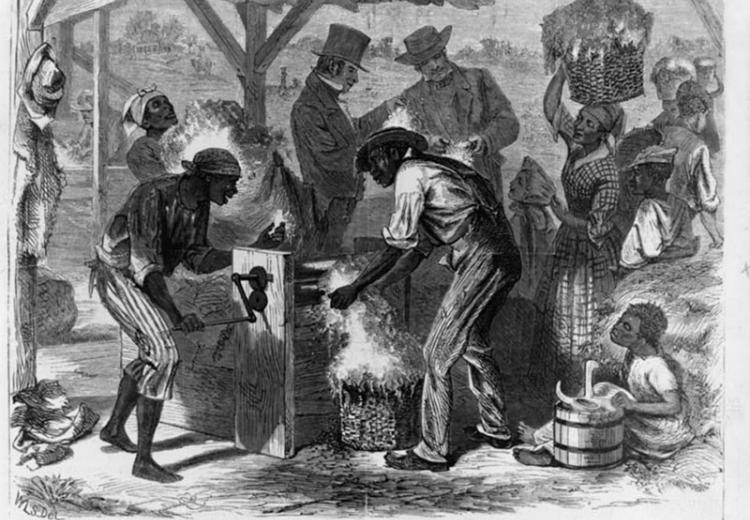Lesson 1: Factory vs. Plantation in the North and South

African American slaves using cotton gin, drawing by William L. Sheppard.
By 1860, regional differences had become so great that Northerners and Southerners felt as if they belonged to two different countries. This lesson focuses on the shift toward mass production in northern factories and on southern plantations that occurred during the first half of the 19th century. Using an economics-focused approach to examining U.S. history prior to the civil war, students examine the role of slavery, industrialization, regionalism, and political responses that ultimately led to the start of a war.
Guiding Questions
How could disagreements over regional economic policies have been resolved?
Was the U.S. Civil War inevitable?
Learning Objectives
Assess how technological changes contributed to political tensions between Northern and Southern states in the early 19th century.
Examine the economic priorities of those in power in the Northern and Southern states and evaluate the political ramifications of these differences.
Assess the impact that economic, political, and geographic differences had on nationalism and regionalism in the U.S.
